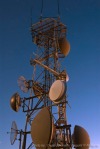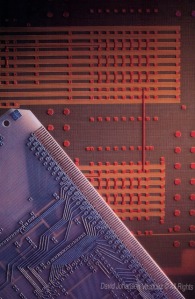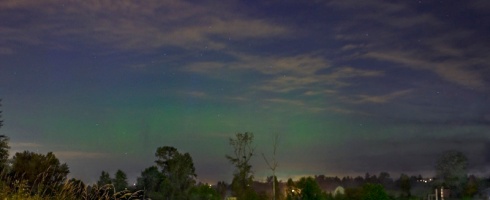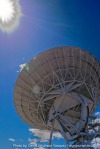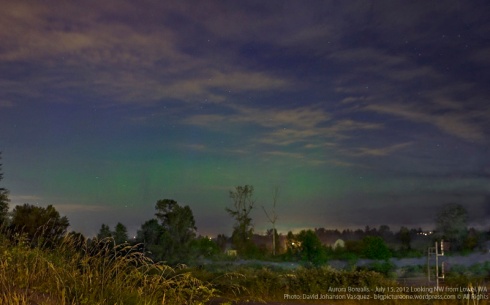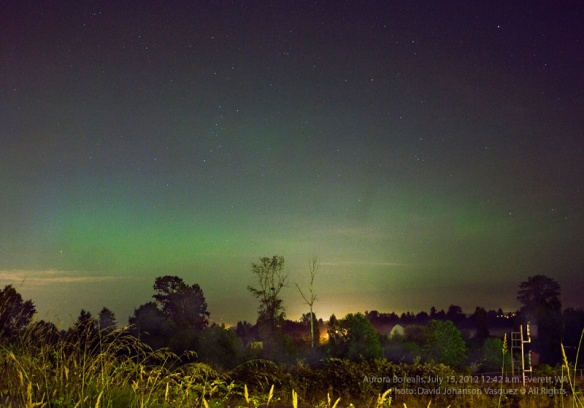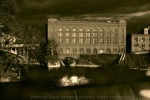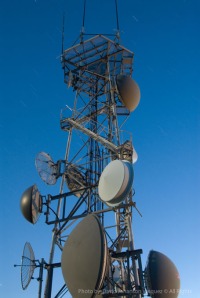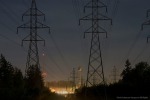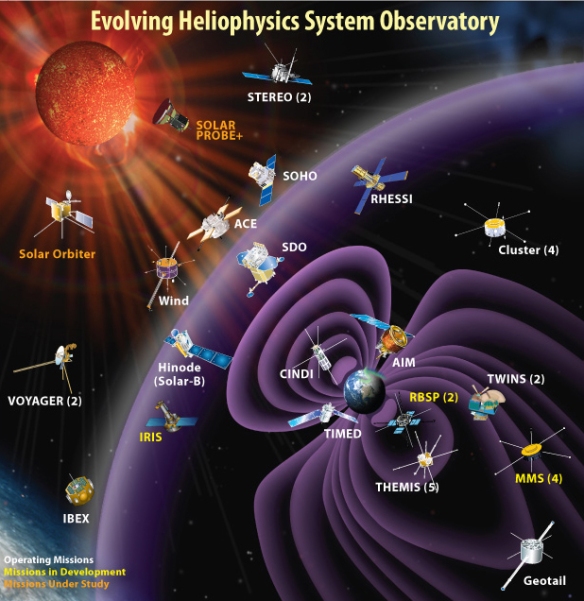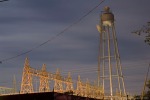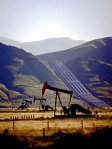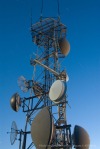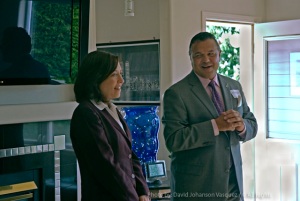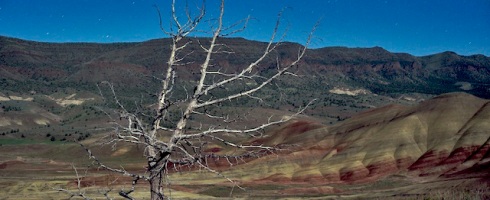Early Mars terraforming site inspected by an American first-generation colonist.
Essay, eLearning program, and multimedia content by: David Anthony Johanson © All writing and photography within this program (unless indicated) was produced by the author.
If you would like to see this essay in an alternative graphic format please visit our Science Tech Tablet site at: http://bigpictureone.wordpress.com/2014/03/04/the-martian-prophecies-earths-conquest-of-the-red-planet/
Fu-tur-ism noun
1. Concern with events and trends of the future or which anticipate the future.
Any sufficiently advanced technology is indistinguishable from magic. — Arthur C. Clarke
.
How Earth Conquered Mars And Successfully Colonized The Red Planet
March 2054
.
.
.
The Evolutionary Mastery Of Mars
In a forty-year period, the march towards making Mars inhabitable, astonished the most optimistic futurist. A sequence of technological events and economic opportunities (commonly known as the Third Industrial Revolution) converged seamlessly, allowing for safe and efficient journeys to the fourth planet from our Sun. Now, human life has sustained itself and is beginning to thrive on Martian soil.
On Earth, three decades into the third millennium, unstable global weather patterns caused by environmental abuse to our oceans, created extreme ripple effects with appalling famines and droughts. Then, suddenly a horrific rain of fire appeared as a sequence of catastrophic meteorite strikes plagued Earth— hastening humanity’s efforts to reach for the red planet. Of all the planets in our solar system — Mars has proven the best hope as a lifeboat and as a refuge for life taking hold.
Collaboration from the World’s nations, aligned rapidly to expand the colonies beyond Earth’s low-orbit. These outposts are in a stable formation at Sun-Earth Lagrangian Points: L2, L4, L5 and beyond. The various sites are used to support manufacturing, exploration and asteroid mining operations. Once established, they became “stepping-stones” towards Mars. Distant supply and launch stations are currently expanding at Sun-Mars Lagrangian points, circulating Mars.
Triumph Through Large Scale Asteroid Mining
After the first three decades of daring space exploration in the late Twentieth Century, momentum was lost from lack of compelling mission. Chemical propulsion system limitations and lack of aerospace manufacturing beyond Earth’s orbit, slowed space exploration’s progress. Major superpowers lacked funding and political will to achieve great advances beyond low Earth Orbit.
As the Twenty-First Century progressed, collaboration of prime aerospace companies Boeing and Space X, developed, hybrid launch vehicles to accelerate humanity’s expanded presence in space. Private commercial ventures determined a great potential existed for mining valuable resources from near Earth asteroids and the Moon. The first company to successfully begin asteroid mining were Planetary Resources, with funding provided by wealthy technology luminaries.
.
.
.
.
.
.
.
.
.
Three-D Printing In Space – A Bridge To Infinity
Early in the Twenty-first Century, new advanced technological tools were developed for flexible and efficient manufacturing. After revolutionary 3-D printing operations took hold in space, opportunities expanded rapidly to develop massive infrastructure beyond Earth’s orbit. Three-D printing devices made prefabrication of immense living and working sites possible on the Moon and various stationary points well beyond Earth’s gravitational influence.
.
Three-D printing for manufacturing space-station stepping-stones
.
Beyond Earth’s Orbit — Islands In Space
As the population of human enterprises rapidly expanded into deep space, exploration of Mars became practical and irresistible.
Using a spectrum of cybernetic applications, including artificial intelligences (AI), atomically precise manufacturing (APM) and 3-D printing provided cost-effective infrastructure manufacturing to expand beyond Earth’s low orbit. The network of space station developments offers a growing population of skilled aerospace workers — dynamic living and work environments.
Molecular nanotechnology (MNT) produces an endless variety of manufactured goods for the inhabitants of interplanetary space. As the initial space stations quickly expanded and connected to one another, they became known as “Island Stations.” Adopting interplanetary codes for infrastructure support commonality is maintained for all inhabitants and guest visits by the National Aeronautics and Space Administration (NASA) and European Space Agency (ESA).
A network of stepping stone islands, which initially were used to extend the reach of asteroid mining operations from stable points beyond a low Earth orbit, is essential for colonizing Mars.
Approximately 10 million miles from Earth, a network of station islands is positioned as a gateway point to Mars. These station networks are mutually protected from solar storms/flares by their own artificial magnetosphere. Earth (blue dot) and its moon can be seen near the upper-center part of the photo.
Revolution — Electro Magnetic Propulsion And Magnetic Shield Protective Fields
Revolutionary, electromagnetic propulsion systems, using super-cooled, conducting magnets and magnetoplasmadynamic (MPD) were developed for vastly superior performance over conventional chemical rockets. The time required to reach destinations such as Mars has been reduced significantly, by a factor of one year to less than two weeks. Initial funding from NASA and ESA, created a collaboration between Boeing, SpaceX and Virgin Galatic to produce these hybrid propulsion space craft. http://www.cbsnews.com/news/boeing-spacex-to-team-with-nasa-on-space-taxi/
The greatest threat to human space travel and colonization is from solar winds of magnetized plasma carrying protons and alpha particles, which can
 break down DNA and lead to cancer. A magnetic coil shield system allows space craft protection from most harmful radiation by creating its own magnetosphere. This shielding system harnesses for universal applications to protect space station populations, inner planetary travelers and Martian colonies.
break down DNA and lead to cancer. A magnetic coil shield system allows space craft protection from most harmful radiation by creating its own magnetosphere. This shielding system harnesses for universal applications to protect space station populations, inner planetary travelers and Martian colonies.
A high energy accelerator was developed on Mars using spectrums of solar energy to recreate a magnetic field to help produce a sustainable atmosphere.
An electromagnetic propulsion cargo ship as it begins entering a high energy state.
Electromagnetic propulsion “asteroid lifter” encounters solar wind storm.
NASA illustration.
Genetic Modification Through Astrobiology Provides Essential Benefits For Human Space Travelers
Evolutionary biology has provided advantages to meet the challenges of human travel into deep space.
The first generation of genetically modified humans was created to limit the effects and risk from extended space travel. Microchip circuitry imbedded into tissue, gave humans expanded capabilities to assure space survivability, productivity, and flight operations. To combat muscle degradation from zero gravity-exposure, contractile protein levels were increased in muscle tissue.
.
Settlements On The Red Planet And Stages Of Terraforming
To survive solar radiation effects, early Mar’s settlers lived bellow the planet’s regolith (soil). Within less than a decade, the colonies developed their own localized magnetosphere, which became encapsulated environments within translucent domes — creating an atmospheric oasis. These aerodynamic structures offer shielding from dust storms and subzero temperatures. Now, an enriched quality of life on Mars includes ever-expanding domains of Earth like atmosphere for expanded development and life above the surface of the red planet.
Meteor showers streaming above craters and cliffs during a Martian sunrise.
Massive mirrors are fixed in orbit above Mars for reflecting warmth back onto its surface, to provide a more temperate climate. Reflected light directed at Martian polar ice caps and its Carbon dioxide atmosphere of CO2 helps to keep thermal energy near the planet’s surface. As a result, a thermal runaway greenhouse effect is created to help build a thicker atmosphere. Release of microorganisms on the red the planet dramatically accelerates production, for intensifying greenhouse gas expansion.
Directing small asteroids with rich concentrations of ammonia to impact nitrate beds on Mars, releases high volumes of oxygen and nitrogen. These highly controlled asteroid strikes are providing substantial positive results to help develop an enriched atmosphere.
Nanotechnology is now employed on the surface of Mars and is dramatically altering landscape regions within various craters. Genetically modified plant forms are successfully taking hold and surviving some test environments. In conclusion, all of these achievements are creating a more Earth like climate, for efforts to terraform Mars.
.
Earth’s Sustainable Community On Mars
Self replicating machines using APM manufacturing allow infrastructure to develop at astonishing rates on the red planet. New scientific, engineering and mining communities are establishing themselves rapidly as they descend from orbiting stations and stationary platforms above the planet. The current population on Mars has surpassed 40,000 inhabitants and is projected to double within the next five-years.
The form of governance adopted by the colonies on Mars is based on a nonpolitical and international form of cooperation. Asteroid mining and APM manufacturing are the largest industries associated with the Mars colonies.
.
Martian colonists celebration party for “Pioneer Days.” Martian sunset seen in the background, behind a massive protective atmospheric shield.
.
Fossil Bed Enigma Reveals We May Never Have Been Alone
Found only days ago in the Antoniadi Crater region, is evidence of a fossil and what appears to be human like footprints. Although this discovery may revolutionize our view of the red planet — we must wait for the samples to arrive on Earth to confirm what could be one of the greatest discoveries of all time.
Discovery at a Martian archeological dig site — “we have never been alone.”
.
.
.
.
.
.
Perchance, the most fascinating evidence of preexisting intelligence of life on Mars, was discovered near the Antoniadi Crater. Enclosed within a geographic site is a source, which is emitting peculiar magnetic fields. Upon further analysis revealed, distinct patterns of what appears as a mysterious complex digital codex. After extensive review and evaluation using a network of 2020 Enigma Genisus Computing system interpreted it as audible, instrumental sounds accompanied by visual projections of humanoid syncopated movements.
Most perplexing is the referenced quantitative variables, suggest the site was or is a time capsule or possibly a time-portal. To see the reference audio and visual projection, click on the link below. https://www.youtube.com/watch?v=53bCaqz0zZA
Music soundtrack for the Martian Prophecies — Powered by Boards of Canada (you can open another web browser if you’d like to have the following music play while viewing this essay)
Solar System & Planetary travel, music ⇒ http://www.youtube.com/watch?v=3l_IMOweP0E
Martian pioneers’ celebratory music ⇒ http://www.youtube.com/watch?v=4jBzl–TN1Q and or http://www.youtube.com/watch?v=PYEZueAelKc
Music for terraforming Mars to ⇒ http://www.youtube.com/watch?v=qthHlLyvplg

Martian moonlight illuminates sculpted cliffs, as “Vesta II” (logistics platform) enters view —piercing the night sky with solar light reflecting off its West-East orbital path.
Facts Concerning Mars
One day on Mars = 24 hours 37 minutes and 22 seconds.
One year on Mars = 686.98 Earth days.
Average distance from Earth to Mars = 225 million kilometers.
The minimum distance from Earth to Mars = 54. million km.
The farthest distance from Earth to Mars = 401 million km.
Warmest temperature of Mars — 70 degrees F (20 degrees C) near the equator
Origin of the name Mars = Ancient Roman god of war and agricultural guardian
The calendar Month named after Mars = March
Links to Learn More About Mars
http://www.wired.com/wiredscience/2010/01/gallery-mars/
http://cbhd.org/content/whose-image-remaking-humanity-through-cybernetics-and-nanotechnology
http://www.jpl.nasa.gov/missions/
http://www.nasa.gov/vision/space/travelinginspace/future_propulsion.html
http://physicsworld.com/cws/article/news/2008/nov/06/magnetic-shield-could-protect-spacecraft
http://www.slate.com/blogs/quora/2013/09/12/outer_space_can_we_make_mars_or_venus_habitable.html
http://en.wikipedia.org/wiki/List_of_private_spaceflight_companies
http://www.forbes.com/sites/brucedorminey/2013/05/29/can-mars-be-terraformed-nasas-maven-mission-could-provide-answers/
http://en.wikipedia.org/wiki/Lagrangian_point
http://www.applieddefense.com/wp-content/uploads/2012/12/2001-Carrico-Sun-Mars_Libration_Points_And_Mars_Mission_Simulations.pdf
http://www.thespacereview.com/article/2305/1
http://blogs.discovermagazine.com/crux/2014/09/08/where-build-off-world-colonies/#.VGp-1BYexjk
http://www.nss.org/spacemovement/greason.html
http://web.mit.edu/sydneydo/Public/Mars%20One%20Feasibility%20Analysis%20IAC14.pdf
A list of over 400 essays on Mars http://www.123helpme.com/search.asp?text=mars
[contact-form][contact-field label="Name" type="name" class="GINGER_SOFATWARE_correct">/][contact-field label="Email" type="email" class="GINGER_SOFATWARE_correct">/][contact-field label="Website" class="GINGER_SOFATWARE_correct">/][contact-field label="Comment" type="textarea" class="GINGER_SOFATWARE_correct">/][/contact-form]







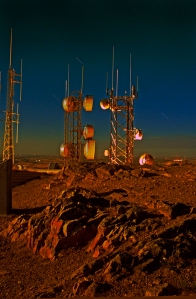







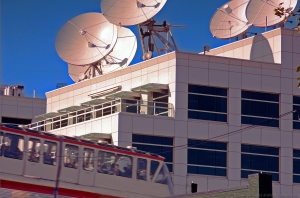














 Radio astronomy’s powerful space exploratory telescope, was developed through research conducted by Karl Jansky in 1931. During this decade, Bell lab’s George Paget Thomson was awarded the Nobel Prize in physics for his discovery of electron diffraction, which was a key factor for solid-state.
Radio astronomy’s powerful space exploratory telescope, was developed through research conducted by Karl Jansky in 1931. During this decade, Bell lab’s George Paget Thomson was awarded the Nobel Prize in physics for his discovery of electron diffraction, which was a key factor for solid-state.


